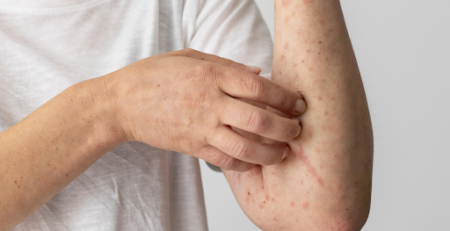Understanding the Clinical Trial Process: A Comprehensive Guide
Clinical trials are the cornerstone of medical advancement, providing the evidence necessary to develop new treatments and improve patient care. At Cahaba Clinical Research, we are dedicated to conducting high-quality dermatology clinical trials that adhere to rigorous standards, ensuring participant safety and the reliability of our findings.
What Is a Clinical Trial?
A clinical trial is a research study conducted with human participants to evaluate the effects, safety, and efficacy of medical treatments, interventions, or devices. These trials are essential for determining whether new treatments are effective and safe for public use.
The Clinical Trial Process
The clinical trial process involves several key stages, each designed to answer specific research questions while safeguarding participants’ well-being.
1. Preclinical Research
Before a clinical trial begins, preclinical research is conducted using laboratory experiments and animal studies to gather initial efficacy, toxicity, and pharmacokinetic information. This phase helps determine whether a new treatment is safe enough to proceed to human trials.
2. Clinical Trial Phases
Clinical trials are typically divided into four phases:
- Phase 0: Also known as microdosing studies, this phase involves administering very small, sub-therapeutic doses of a drug to a small group of healthy volunteers to gather preliminary data on pharmacokinetics and pharmacodynamics.
- Phase I: This phase focuses on assessing the safety, tolerability, pharmacokinetics, and pharmacodynamics of a drug in a small group of healthy volunteers or patients. The goal is to determine the appropriate dosage range and identify side effects.
- Phase II: In this phase, the treatment is given to a larger group of patients to evaluate its efficacy and further assess its safety. This phase helps determine whether the treatment works as intended and provides information on optimal dosing.
- Phase III: Phase III trials involve large groups of patients and aim to confirm the treatment’s effectiveness, monitor side effects, and compare it to commonly used treatments. Successful Phase III trials provide the data needed for regulatory approval.
- Phase IV: Also known as post-marketing surveillance, Phase IV trials occur after treatment has been approved and marketed. These studies monitor the long-term effects and effectiveness of the treatment in a broader population.
3. Study Design and Protocol Development
A clinical trial design and protocol is meticulously planned to ensure scientific validity and participant safety. The protocol outlines the study’s objectives, methodology, participant eligibility criteria, treatment regimens, and statistical analysis plans.
4. Regulatory Approval and Ethics Review
Before a clinical trial can begin, it must receive approval from regulatory authorities and an Institutional Review Board (IRB). The IRB reviews the study protocol to ensure that participants’ rights and welfare are protected.
5. Participant Recruitment and Informed Consent
Recruiting participants involves identifying individuals who meet the study’s eligibility criteria. Once potential participants are identified, they are provided with detailed information about the trial, including its purpose, procedures, risks, and benefits. Informed consent is obtained before participation begins.

6. Data Collection and Monitoring
During the trial, data is systematically collected on participants’ health status, treatment responses, and any adverse events. This data is closely monitored to ensure participant safety and the integrity of the study.
7. Data Analysis and Reporting
After the trial concludes, the collected data is analyzed to determine the treatment’s efficacy and safety. The results are compiled into a comprehensive report and submitted to regulatory authorities for review.
8. Post-Trial Follow-Up
Even after a clinical trial ends, participants may be monitored for long-term effects. This follow-up ensures that any delayed adverse reactions are identified and addressed promptly.
Why Clinical Trials Matter
Clinical trials are vital for advancing medical knowledge and improving patient care. They provide the evidence needed to:
- Develop new treatments
- Improve existing treatments
- Understand disease mechanisms
- Enhance patient outcomes
Participation in Clinical Trials
Participating in a clinical trial offers several benefits, including access to new treatments, close monitoring by healthcare professionals, and contributing to medical research. However, it’s essential to consider potential risks and discuss them with your healthcare provider before enrolling.
Frequently Asked Questions (FAQs)
1. What is a clinical trial?
A clinical trial is a research study involving human volunteers aimed at evaluating medical, surgical, or behavioral interventions. They are the primary method researchers use to determine if a new treatment is safe and effective.
2. Who can participate in a clinical trial?
Eligibility varies by study. Factors include age, gender, type and stage of disease, previous treatment history, and other medical conditions. Each trial has specific inclusion and exclusion criteria to ensure participant safety and data integrity.
3. Are clinical trials safe?
While clinical trials are designed to prioritize participant safety, they do carry potential risks, including side effects or ineffective treatments. However, trials are conducted under strict regulatory oversight, and participants are closely monitored throughout the study.
4. What are the potential benefits of participating in a clinical trial?
Participants may gain access to new treatments before they are widely available, receive close medical attention, and contribute to medical research that may benefit others in the future.
5. Will I be compensated for participating?
Compensation varies by study. Some trials offer payment for time and travel, while others may not. Details are provided during the informed consent process.
6. Can I withdraw from a clinical trial after it has started?
Yes, participation is voluntary, and you can withdraw at any time without penalty. It’s essential to inform the research team if you decide to leave the course.






